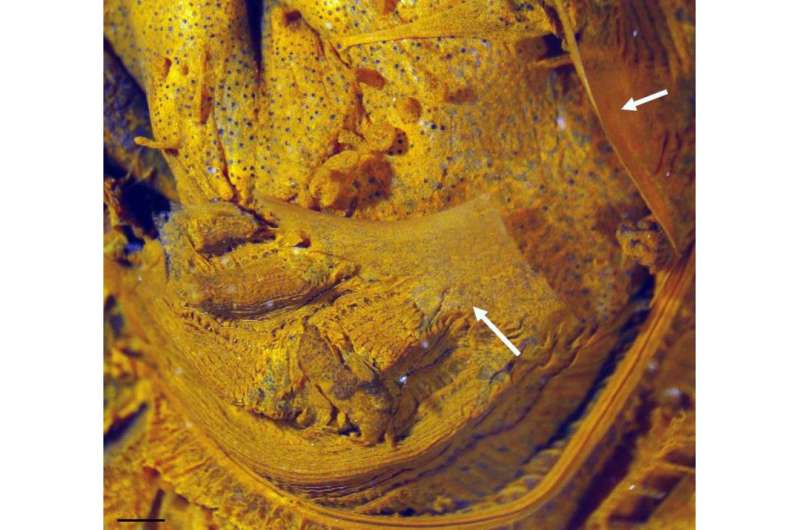Survival of the gutless? Filter-feeders eject internal organs in response to stress

The vast range of regenerative powers within the animal kingdom has fascinated scientists since the early 18th century. From hydras to planarians and geckos, the remarkable ability of certain species to regrow parts of their bodies and subsequently regain some or all of their original form and function has presented invaluable opportunities for research on human cell signalling, development, and adaptation.
A recent Tel Aviv University study published in Scientific Reports explores the ability of the tropical ascidian Polycarpa mytiligera, a common coral reef organism, to eviscerate and regenerate its gut within 12 days and rebuild its filtration organ, the branchial sac, within 19 days. Dr. Noa Shenkar and her student Tal Gordon from the Department of Zoology at TAU's Faculty of Life Sciences and the Steinhardt Museum of Natural History and National Research Center observed a recurrent pattern of evisceration, "death," and finally rejuvenation in ascidians from the Gulf of Aqaba.
The organism is a "filter-feeder" that eats by straining suspended matter and food particles from water, usually by passing the water over a specialized filtering structure.
Playing dead
"Polycarpa are the most abundant ascidian species in the Gulf of Aqaba and one of the most abundant in the world," said Dr. Shenkar. "In the process of studying their distribution and depths, we noticed they would throw something at us and then immediately shrink and remain highly contracted and camouflaged. I was sure they had died, but something told me not to discard them.
"Sure enough, four days later, the organisms regained their composition—as if they had been 'reborn,'" Dr. Shenkar said. "This was very unexpected."
The researchers conducted most of their study underwater, marking individual organisms then taking movies of the process. They observed the specimens to discover how the viscera were ejected (i.e., from which end of the organism); whether they survived following evisceration; and if and how they rebuilt their organs. They found that the polycarpa ruptured its branchial sac to eject its digestive tract. Using light mechanical pressure, it contracted, camouflaging itself as "dead."
See video footage of the contraction:
"In the underwater observatory, we observed fish—which had not fed for a day—circling, but none of them ate the ejected digestive tract," said Dr. Shenkar. Although the eviscerated guts were unpalatable to preying triggerfish and pufferfish, the researchers' chemical analysis revealed no significant levels of toxic compounds in the expelled organs. It is possible that the digestive tract contains other compounds that are unpalatable to the fish, which are not detected in a regular chemical analysis.
A new direction for soft-tissue regeneration research
The polycarpa's evisceration response provides a unique opportunity to deepen the knowledge and revive the study of evisceration in ascidians. But perhaps more importantly, the study findings establish a solid platform from which to study regeneration of the human digestive tract in its molecular, cellular, and developmental aspects.
"All signs point to evisceration as a defense mechanism, and this alone is interesting," said Dr. Shenkar. "But this is also important and relevant to human research. Ascidians and vertebrates—and humans are vertebrates—share close affinities, so understanding ascidian regeneration pathways can point to promising new directions in human soft tissue regeneration research."
The human body and the ascidian body share many basic biochemical and cellular processes as they are both chordates. Studying Polycarpa as a model organism provides insight into the workings of other organisms, as well as an in-vivo model for research of the human immune system and regeneration.
"This information can surely be used to study different biochemical pathways involved in soft-tissue regeneration," Dr. Shenkar concluded.




















